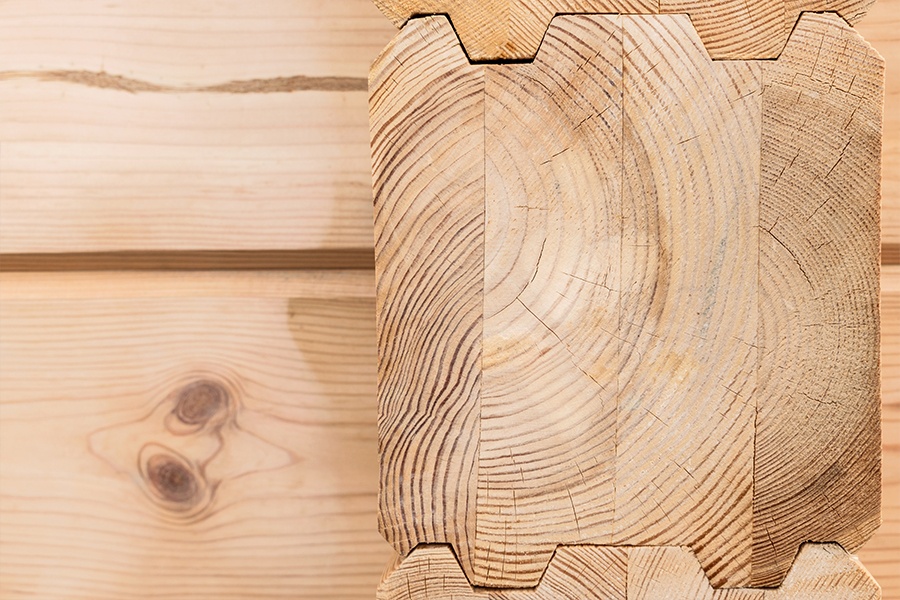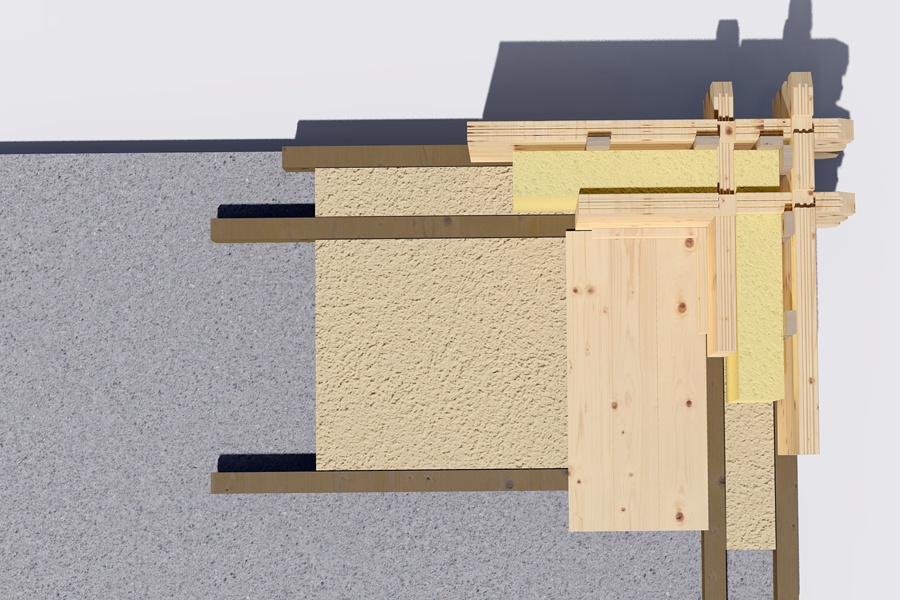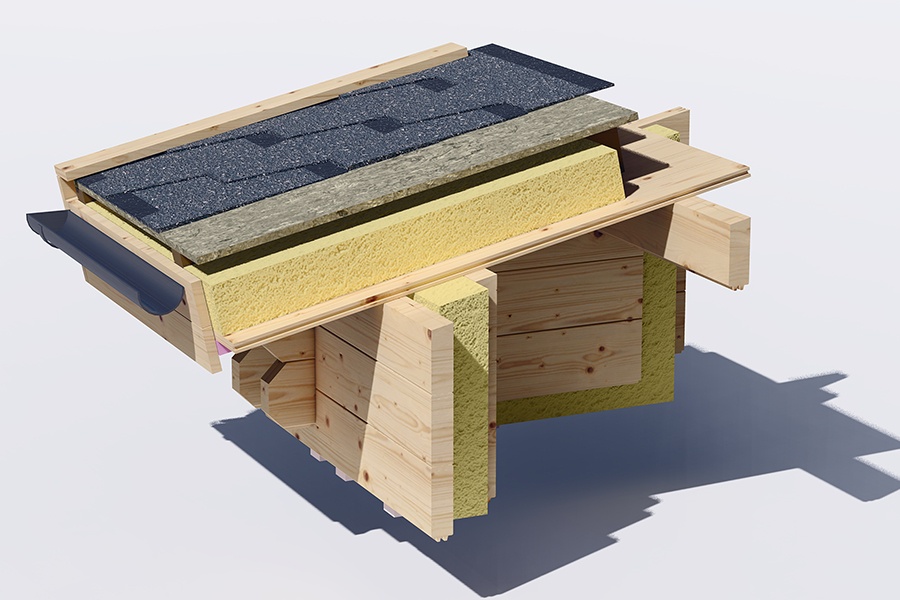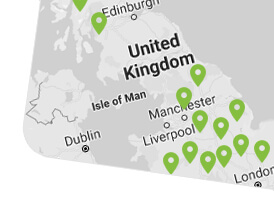Have you ever dreamt of a cosy and warm wooden log cabin with a crackling fireplace? Or maybe you have been recently contemplating getting yourself a nice garden room, studio, fitness space or a workshop that you could comfortably use all-year-long? If you want to have some more personal space in the garden, where you could feel utmost comfort at all times, getting an insulated log cabin could be the best decision you could make. Wondering, how warm a log cabin can actually be during wintertime? We can assure you that with proper insulation, it stays extremely warm and cosy during all seasons of the year. Precise insulation of your cabin’s walls, roof and floors with prime quality insulation materials in addition to double-glazed windows and doors can guarantee high levels of energy efficiency and thermal comfort. Let’s see where to start in terms of log cabin insulation, and how this choice could benefit your life. 
So, what are the main benefits of an efficiently insulated log cabin?
-
Ability to live in your cabin all-year-long
A log cabin could be much more than a summerhouse only! The first and the most obvious benefit of log cabin insulation is the ability to comfortably lounge in your cabin through any season of the year. Moreover, if you would like to build a remote office space dedicated to efficiently fulfilling your work tasks, an insulated garden office could be your go-to choice. Insulated log cabins can also serve as charming garden studios, art spaces or workshops, allowing you to have some precious undisturbed time a day, where you can fully dive into your desired activity or hobby and enjoy doing what you love, having all the space to yourself only.
-
Cutting down your energy costs
Due to the natural insulation properties of the wood, the inside of the log cabin quickly heats up throughout the day and retains the heat well, ensuring thermal comfort and allowing you to dramatically save on energy costs (which you would spend on powering heating devices), compared to other types of buildings. The maintenance of log cabin insulation does not require any additional costs as well once it’s done, you don’t need to worry about it. In the case of using additional electrical heating devices, you have to constantly take care of it and monitor their condition. Choosing an insulated log cabin is a long-term environmentally friendly solution, resulting in reduced energy bills and increased thermal comfort with no hidden costs.
-
Preserving your log cabin from moisture
Lingering moisture is not something you want to experience in your log cabin neither in terms of your own wellbeing nor for the condition of your belongings. Humidity around the house causes overall discomfort to the residents themselves and can become the main reason for mould, decay and discolouration of the cabin’s surface. Also, it can cause structural damage to the cabin itself, as well as your furniture and other items that are being kept in it. Thus, proper log cabin insulation is highly advised, especially if you are building yourself a cabin in damper climates, such as the UK, enabling you to enjoy the rainy days cosily sitting and enjoying the pleasant warmth inside.
-
Keeping your belongings safe
Nobody could argue with the fact that it is essential to insulate the residential buildings for comfortable living experience, however, proper log cabin insulation might also be highly beneficial for storage spaces like wooden sheds or garages. If you are thinking of transferring some of your belongings to the garden shed, it might be worth considering the cabin that is fully insulated throughout so that your items are kept at optimal temperature and remain in a perfect condition.
Where to start in terms of log cabin insulation?
 <
<
Regarding the log cabin insulation, we should first pay the tribute to the natural insulation properties of conifer timber, which have been highly appreciated for many centuries, since the log construction method has initially become popular in European countries. Till current days, wooden buildings are considered to be a highly economical and environmentally friendly choice for many families in the UK. Wood density plays a major role in natural insulation. Thus, the most important thing to do is to select the right thickness of the logs. The thicker, the better simple as that. You could choose a 44 mm or 66 mm and additionally insulate the roof and floors. While the twin-skin wall construction (44+44 mm) allows to efficiently insulate the cabin throughout (in between the walls, roof, and floors) and ensures high levels of natural insulation.
Which Cabin Insulation Option to Choose?
At Quick-garden.co.uk, you can select a preferred log cabin insulation package, covering the insulation of cabin walls, roof and floors: basic or residential-grade version. Due to the twin skin wall construction with an air gap in between, log cabin walls are extremely easy to insulate. A high-quality insulation material ensures that your cabin stays warm and cosy during any season of the year. All our cabins come with double-glazed windows and doors, helping to efficiently capture the heat inside. By additionally selecting PVC windows and doors instead of regular wooden ones, you can transfer your log cabin’s insulation into the whole new level.
λ-value (thermal conductivity) defines the performance of the cabin’s insulation and the ability to retain heat. At Quick-garden.co.uk, we use high-quality polyurethane insulation boards with λ-value of 0.022 W/m·K. However, we can offer you any required level of thermal conductivity of insulated cabins based on your individual needs.
Our cabin kits are delivered together with clear installation instructions, making it easy for you to insulate your cabin yourself. However, if you require help with your project, we are always happy to organize the professional cabin assembly and insulation for you.
For your convenience (and cost-efficiency), you can select among two log cabin insulation versions:
- Basic insulation version features a twin skin (44 + 44 mm) wall construction, with high-quality polyurethane boards and an air gap in between, as well as insulated roof and floors. Choosing a basic insulation version works great for insulating regular log cabins, especially the ones for seasonal use, such as summer houses or vacation homes. When building log cabin mobile homes, a bit thicker polyurethane boards are used to ensure the planning permission friendliness of the construction. Cabin insulation prevents the house from overheating during the summer months, while in colder months, fewer energy resources are required to reach the optimal indoor temperature.
- Residential-grade insulation version is fully compliant with residential building thermal insulation requirements and features a twin skin (44 + 44 mm) wall construction, with much thicker polyurethane boards in between than in basic insulation, as well as insulated roof and floors. Residential-grade insulation provides the ability to comfortably live in your cabin all-year-round, guarantees utmost energy efficiency of the building (the same or even higher than in regular metal or concrete constructions), ensures sustainability and environmental friendliness of the solution. What is more, it helps to reduce the indoor moisture levels to the minimum and provides superb acoustic insulation, which is essential for your residential comfort.
The importance of log cabin wall, roof and floor insulation
Have in mind, that by insulating the log cabin walls only, you may lose up to 70% of heat through the roof and floor. Log cabin roof insulation helps to maintain an optimal temperature inside the building all year long, keeping you much cooler during the summer and warmer in the winter.
-
How to insulate log cabin walls?

Insulating log cabin walls is extremely easy if you select a log cabin with a twin skin (double wall) construction. The insulation boards are placed in between the walls, precisely fitting them together with a foil tape and leaving the air gap for ventilation next to the outer wall.
-
What defines a great log cabin roof insulation?

If you are wondering how to insulate a log cabin roof, the process is quite simple, quick and provides efficient results. The insulation boards are fitted in between the roof boards and the roof coverings (bitumen shingles or metal roofing). It is important to note that when insulating the roof, fitting a vapour barrier (diffusion membrane) is a must. This membrane allows all the moisture from the cabin to go out and prevents the moisture from the outside from entering the cabin. It is important to leave a ventilation gap in between the membrane and the OSB board and lay the roof covering on the top. If you choose a metal roof covering, the process is the same, only instead of the OSB board, roof battens are used.
-
The key aspects of efficient log cabin floor insulation

The log cabin floor insulation is fitted right underneath the floorboards, between the joists, fixing the gaps with a foil tape. Depending on your preferred insulation package, insulation boards of the selected width are fitted between the floor joists. It is important to note that the insulation boards must stay off the ground, to prevent the moisture from rising above. Hydro-isolation is used between the base and the insulation boards for waterproofing the floors and efficiently insulating your cabin from moisture.
-
The role of log cabin windows in log cabin insulation

Log cabin windows also play an essential role in ensuring overall thermal comfort and helping to capture the heat inside. Our cabin kits arrive with double-glazed windows and doors depending on your preferences, you can choose wooden or PVC ones. Double glazing not only helps to ensure the optimal temperature in your cabin all year round but also allows to reduce the outside noise, which might be extremely important if you are building yourself a garden office or studio and require a silent and undisturbed space. What is more, you can always opt for PVC windows and doors which will ensure advanced levels of thermal insulation, noise isolation and residential comfort.
What is usually included in the price?
When purchasing an insulated cabin version at Quick-garden.co.uk (basic or residential-grade), insulation boards (the width of which depends on your exact choice) are included in the price. Your own insulation material can also be used, if it meets specific width and quality requirements. What is more, plywood is included in the price if the width of roof insulation is thicker than 25 mm. In terms of roof insulation, when selecting the EPDM roof coating, we additionally provide 9 mm thickness OSB sheets. However, the diffusion membrane needs to be purchased separately.
To sum up, log cabin insulation could be the best choice you could make in terms of your living or lounging space arrangements. Even though it requires you to initially invest a bit more, eventually it helps you save a lot by reducing the heating costs. More importantly, it ensures your utmost comfort by allowing you to comfortably reside in your cabin all year long. When it comes to your log cabin insulation, you can always opt for the DIY solution, making it more affordable for you, however, ordering a professional service could save you a lot of time and assure you that the job is done at the highest level of quality and precision. If you have your own insulation material that you would like to be used for your cabin’s insulation, it is perfectly fine as long it matches the previously defined thickness requirements! Still not sure which insulation version would work best for you? Get professional advice our friendly team will be happy to help.












